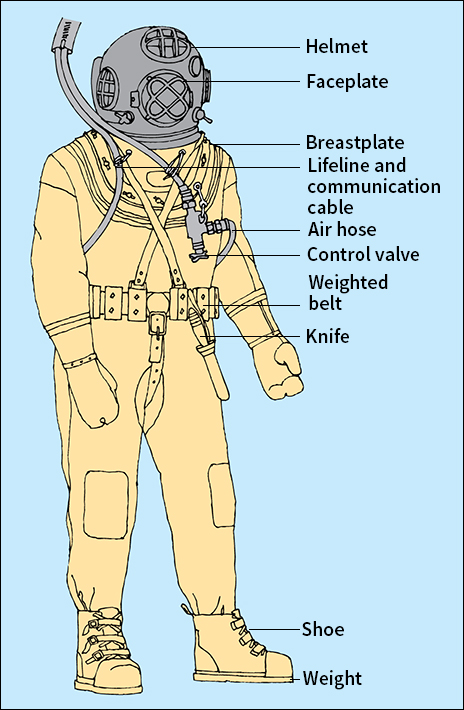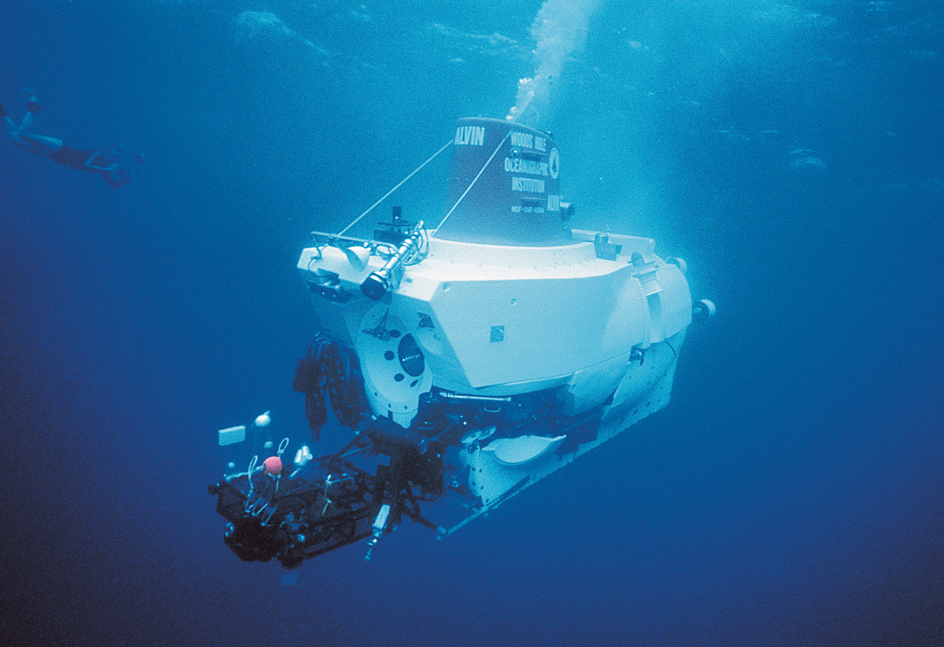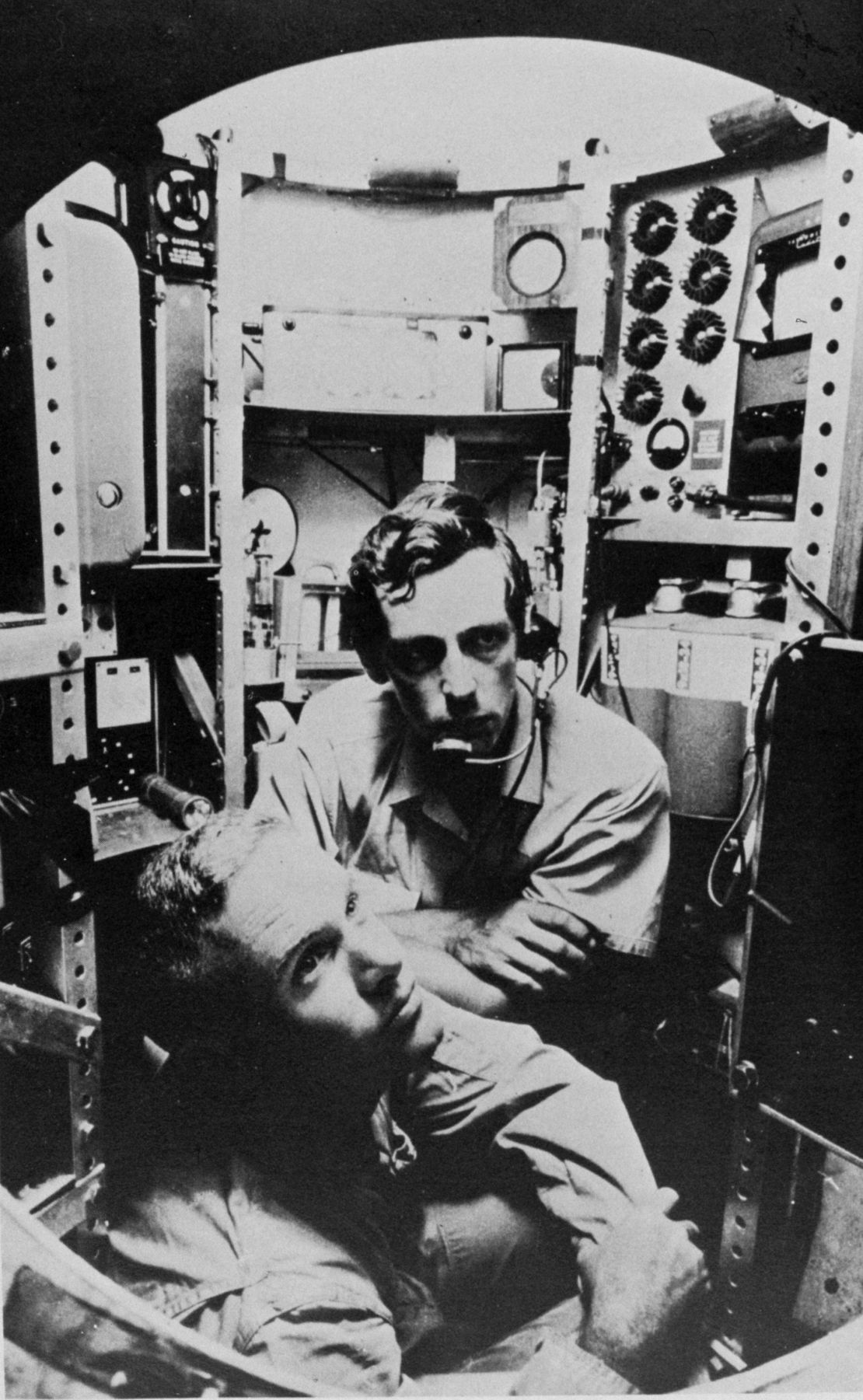Diving, Underwater, is the way people reach the strange and beautiful world beneath the surface of oceans, lakes, and rivers. Ancient peoples dived underwater in search of fish, other water animals, and plants for food. With improved skills and equipment, many activities began to be performed underwater.
Today, divers repair ships, recover valuable objects, build and repair various types of structures, and conduct research. Work can be performed at great depths in specially equipped diving vehicles. In the armed services, divers and submarines carry out military missions. Many people enjoy underwater diving as a sport. They dive to study underwater life, to take photographs, to hunt water animals, or simply to explore.
Kinds of underwater diving
There are two basic kinds of diving: (1) ambient diving, in which the diver’s body is exposed to the pressure of the ambient (surrounding) water; and (2) diving in vehicles that protect divers from the water pressure.
Ambient diving.
Water pressure on the body increases with water depth. At great depths, this pressure can have dangerous effects on an ambient diver. The three types of ambient diving are (1) breath-hold diving, (2) scuba diving, and (3) surface-supplied diving.
Breath-hold diving
is the oldest and simplest form of underwater diving. It is also called free diving, skin diving, and snorkel diving. Breath-hold divers may use no equipment at all, but most of them use a face mask, foot fins, and a short breathing tube called a snorkel. The snorkel allows the diver to swim at the surface and observe underwater before diving.
Most breath-hold divers can go only 30 to 40 feet (9 to 12 meters) deep. They must surface to breathe after less than a minute. Some skilled divers can go as deep as 100 feet (30 meters) and stay submerged for as long as two minutes.
Scuba diving
gives divers greater mobility and range than breath-hold or surface-supplied diving. The word scuba stands for self-contained underwater breathing apparatus. A scuba diver wears metal tanks that hold compressed air or a special mixture of breathing gases. The diver breathes from the tanks through a hose. A device called a demand regulator supplies the amount of air required. Scuba divers also use a mask and fins.
The most common type of scuba equipment, called open circuit scuba, uses air. The diver breathes air from the tank, and the exhaled air is released into the water. Closed circuit equipment, also called a rebreather, uses oxygen or a mixture of oxygen and other gases. It filters out the carbon dioxide and other harmful gases from the exhaled gas. More oxygen is added automatically. This action enables the diver to breathe the same air again and again.
Surface-supplied diving
involves wearing a waterproof suit and a helmet. A diver gets air or breathing gas through a hose connected to air pumps on a boat. Most deep diving is surface supplied. Divers wear many kinds of helmets and suits. Some wear heavy helmets and canvas suits. Lightweight fiberglass helmets and special diving masks are replacing older helmets made of copper. In addition to hoses that supply breathing gas, other hoses and wires may supply hot water to warm the diving suit, electricity or high-pressure air to operate power tools, and gases used for welding torches.

Diving in vehicles.
There are several kinds of diving vehicles. These vehicles keep divers dry, warm, and at surface pressure.
Some divers wear metal suits called articulated armor. These suits cover the entire body. Like diving vehicles, articulated armor provides protection against pressure, but it enables the diver to move about more freely. Some types of articulated armor permit the diver to descend and ascend without the aid of cables.
Submarines
are the largest diving vehicles. Most submarines are warships that carry powerful weapons. For more information about these ships, see Submarine.
Submersibles
have extremely strong hulls and can descend much deeper than submarines can. Remotely controlled submersibles, which are operated using a cable, can descend to about 20,000 feet (6,100 meters). Submersibles carrying a crew can descend to about 21,000 feet (6,500 meters). Submersibles are used for research and other purposes.

The first submersibles, including the bathysphere and the benthoscope, were ball-shaped chambers with viewing ports (windows). They were lowered on cables from ships. Modern submersibles have motors and propellers and can maneuver independently. Some receive electric power through cables from the surface, but each carries its own supply of air. Some of these vehicles have external mechanical arms called manipulators, which can pick up objects from the ocean floor. Submersibles also have cameras and floodlights that enable scientists to photograph objects and organisms at depths where sunlight never penetrates.
Some types of submersibles carry tanks of gasoline, oil, or a foam composed of tiny glass bubbles. Such light substances help make the craft buoyant (able to float). Tanks filled with air, such as those used in submarines, would be crushed by the pressure at great depths. To descend, some of the buoyancy substance is released and replaced by water, which gives the craft additional weight. To ascend, the craft is lightened by dropping pieces of iron carried for this purpose. Some types of submersibles also use propellers when descending or ascending.
A submersible called a bathyscaph consisted of a steel sphere attached to the bottom of a cigar-shaped hull filled with gasoline. Gasoline is lighter than water and so it gave the craft buoyancy. In 1960, the bathyscaph Trieste, piloted by the Swiss engineer Jacques Piccard and U.S. Navy Lieutenant Don Walsh, set a record for the deepest dive by a submersible. The Trieste descended about 35,800 feet (10,910 meters) to the bottom of the Mariana Trench, the deepest part of the Pacific Ocean. In 2012, the Canadian-born film director James Cameron also descended to the bottom of the trench at about the same depth as the Trieste in the specially designed submarine Deepsea Challenger. The American explorer Victor Vescovo made the deepest dive ever recorded in 2019. His submersible Limiting Factor descended 35,853 feet (10,927 meters) to the bottom of the Mariana Trench. See Bathyscaph. 
Dangers of underwater diving
There is greater pressure underwater than on land. The pressure increases by almost half a pound per square inch (0.04 kilogram per square centimeter) for each foot (30 centimeters) of depth. For example, the pressure on a diver 33 feet (10 meters) beneath the surface is twice as great as the air pressure at the surface. An ambient diver may be injured if the pressure in the lungs and other air spaces in the body does not equal the water pressure. Such an injury is called barotrauma or squeeze.
During ascent, the pressure in the lungs must be kept equal to the decreasing water pressure. Otherwise, a serious condition called air embolism may result. An ambient diver breathes more molecules of air underwater than on land because the air breathed underwater is compressed. When the diver rises to the surface, the air in the lungs expands because of the lesser pressure. If the air cannot be exhaled, it will tear the lungs and force air bubbles into the blood. These bubbles can block the flow of blood and severely injure or even kill the diver. Air embolism can be prevented by breathing naturally and ascending slowly.
A condition known as the bends or decompression sickness occurs when nitrogen bubbles form in the blood. Nitrogen gas makes up more than three-fourths of the air breathed by human beings. An ambient diver who breathes compressed air absorbs large amounts of nitrogen into the blood. As the diver ascends, this excess nitrogen is exhaled. But if the diver ascends too quickly, bubbles of nitrogen gas form in the blood. The nitrogen bubbles can block the flow of blood and severely injure or kill the diver. A diver can avoid the bends by rising slowly enough to allow the excess nitrogen to be eliminated through breathing.
A chart called a decompression table tells a diver how long he or she can stay at a certain depth without absorbing a dangerous amount of nitrogen. It also tells how slowly the diver must ascend to avoid the bends. A person who has air embolism or the bends should be put into a recompression chamber immediately. In this chamber, the diver is returned to a pressure which compresses the bubbles so that the gas dissolves back into the blood. The pressure is then reduced in stages.
Divers breathing air at extreme depths may also suffer a kind of drugged effect called nitrogen narcosis. This condition causes a loss of the ability to reason. Nitrogen narcosis occurs most frequently at extreme depths. To avoid it, divers may breathe a gas mixture that contains helium instead of nitrogen.
A diver who breathes 100 percent oxygen at great depths may suffer oxygen poisoning. The victim becomes dizzy and vomits and may have convulsions. Gas mixtures with a high oxygen content can also cause oxygen poisoning.
History
Breath-hold divers dived for shells in the Mediterranean Sea as early as 4500 B.C. Ancient Greek and Roman divers sought pearls, sponges, and shells.
Divers in the Persian Gulf used goggles made of polished clear tortoise shell to see clearly underwater as early as A.D. 1300. In the early 1930’s, Guy Gilpatric, an American diver, became one of the first to use rubber goggles with glass lenses. By the mid-1930’s, face masks, fins, and snorkels had come into use.
The first devices that enabled people to breathe underwater were called diving bells. These bell-shaped hulls have been used since ancient times. Diving bells are open to the water at the bottom and get air from the surface through a hose. The air pressure that exists within the bell keeps water out of the device.
In 1715, an English diver named John Lethbridge designed a wooden and leather diving suit that was used in salvage work. The suits used for helmet diving today are based on a diving suit that was introduced in 1837 by Augustus Siebe, a German engineer who was living in England.
Independent breathing devices for diving appeared during the late 1800’s and early 1900’s. The first safe and simple device, the aqualung, was invented in 1943 by two Frenchmen, Jacques-Yves Cousteau, a naval officer, and Emile Gagnan, an engineer.
The development of enclosed diving vehicles expanded the range of underwater activity. Otis Barton of the United States designed the bathysphere. In 1930, he and William Beebe, an American naturalist, made the first dive in it. The Swiss physicist Auguste Piccard designed the first bathyscaph in 1948.
Experimental underwater saturation habitats were developed in the 1960’s. These stations consist of one or more buildings erected on the ocean floor. They have been tested at depths ranging from 30 to more than 600 feet (9 to 180 meters). Compartments inside the buildings are filled with compressed breathing gas. Divers may live there for weeks. They leave the station daily to explore or work. By staying underwater, the divers avoid the need to undergo decompression every day. The first saturation habitat was built off the coast of France in 1962 by Cousteau. During the 1960’s and 1970’s, many such structures were built in various locations.
